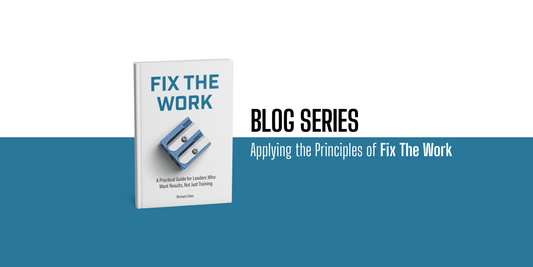Training Shouldn’t Be Your First Move or Your Default
Richard SitesShare This Post
Inside most companies, a familiar pattern plays out. A performance problem shows up. Someone flags it. And almost without question, the response becomes a request for training. The assumption is that if people are not doing something the right way, they must need instruction. A meeting is called. A request is sent. And the learning team is expected to get to work.
So the team does exactly that. They gather background. They ask a few quick questions. They pull together resources. They begin to sketch out a course or a set of slides or a new knowledge hub. Within days, the content engine is running.
And still, the problem remains.
Despite all the effort, the behavior does not shift. The process still breaks down. The same issue shows up again next quarter. Everyone can point to the training that was built, but no one can point to the result it was supposed to achieve. The learning team did their part, but the outcome never arrived.
This is what happens when training is used as a default solution. The team builds a response without first checking the diagnosis. The request is treated like a decision instead of a hypothesis. Everyone moves straight into creation without stepping back to examine what is actually happening in the work.
Most performance issues are not knowledge problems. They are workflow problems, clarity problems, communication problems, feedback problems, or tool problems. These issues live inside the system, not inside the person. But when every issue is translated into a training need, the real barriers to performance stay hidden. Content gets produced, but behavior does not change.
Teams do not do this out of laziness. They do it out of habit. In many organizations, the idea of training feels productive. It offers something tangible. It sounds supportive. It feels like a helpful response. But the familiarity of training does not make it effective. What seems like action is often just movement.
The better path begins with a pause. Not a delay or a stall, just a short pause to ask better questions. What exactly is not happening that needs to happen? What does success look like in real work, not just in theory? What is getting in the way right now? Has anything already been tried? Who actually owns the result?
These questions do not require a formal assessment or a deep discovery process. They require clarity. They shift the conversation away from content and toward the conditions of performance. They help the learning team figure out whether training is a useful lever or simply a familiar response.
When teams work this way, they move faster. They waste less time building things that never get used. They spend less energy chasing approvals and revising products that were never needed in the first place. They earn more trust because they are not just fulfilling requests. They are solving problems.
And the solutions they build are sharper, smaller, and more aligned with what actually needs to change in the work.
If you want to build something useful, you have to understand what it is meant to fix. If you cannot describe the change in terms of what people are doing or not doing, you are not ready to start designing anything.
Training might still play a role in the solution. But it should not be the automatic first step. It should not be the default response to every performance issue. And it should never be the only tool in use.
Start with the work. Look at what is happening. Clarify what is not. Ask what would need to shift and why it matters. The right solution usually becomes clear once the problem is finally understood.
And if it turns out not to be training at all, you just saved your team from doing the wrong work really well.





